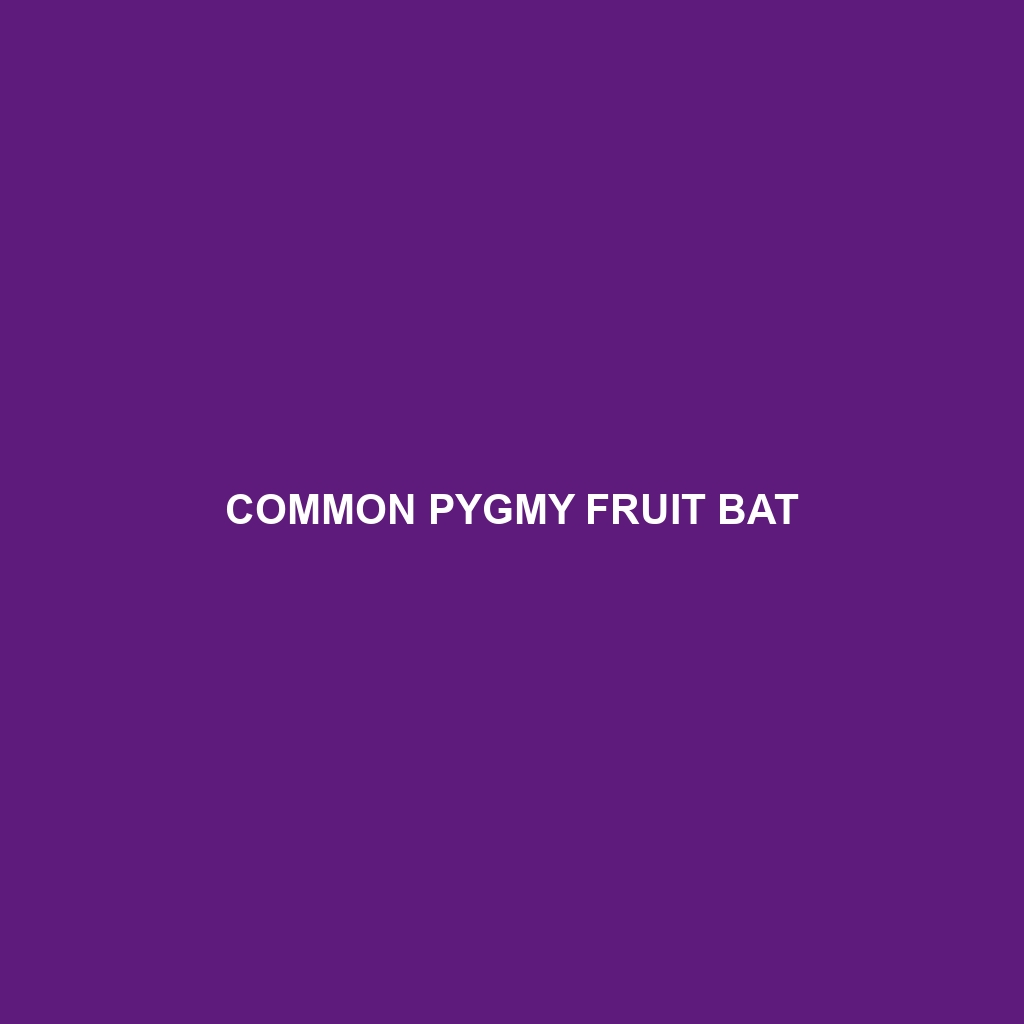Common Pygmy Fruit Bat
Common Name: Common Pygmy Fruit Bat
Scientific Name: Honduran fruit bat (Erophylla sezekorni)
Habitat:
The Common Pygmy Fruit Bat primarily inhabits tropical and subtropical regions of Central and South America. Found in countries such as Honduras, Costa Rica, Panama, and parts of Colombia, these bats favor moist forests, including lowland rainforests and montane cloud forests. They are often seen roosting in tree hollows, under the leaves of large plants, or in caves, making them integral to their forest ecosystems.
Physical Characteristics:
This small bat typically measures about 3 to 5 inches (8 to 13 cm) in body length, with a wingspan of approximately 12 to 14 inches (30 to 35 cm). Its fur is predominantly brown with lighter underparts, often exhibiting a reddish hue. The Common Pygmy Fruit Bat has large, rounded ears, a small face, and a defining noseleaf, contributing to its distinctive appearance. Their small size makes them one of the tiniest bat species, allowing them to navigate through the dense foliage of their habitats with ease.
Behavior:
Common Pygmy Fruit Bats are nocturnal creatures, primarily active during the night when they engage in foraging for food. They are known for their agile flight and can hover in place to access fruits and flowers. Socially, they tend to roost in small colonies, fostering interaction and communication through ultrasonic calls. These bats exhibit a unique behavior known as “leaf-gleaning,” where they pick fruits directly from the surface of leaves, a skill that plays a critical role in their feeding habits.
Diet:
The diet of the Common Pygmy Fruit Bat consists largely of fruits, particularly figs, berries, and other soft fruits. They are also known to consume nectar from flowers, making them important pollinators in their ecosystems. Their feeding habits facilitate seed dispersal, contributing to plant growth and biodiversity within their habitats. This frugivorous diet highlights their integral role in both pollination and seed dispersal.
Reproduction:
Common Pygmy Fruit Bats typically breed once a year, with a gestation period of about 2 to 3 months. Breeding usually occurs during the wet season when food is abundant, enhancing the survival chances of the offspring. Females give birth to a single pup, which they nurse until it can forage independently. Parental care is critical during the initial stages, as the pup relies on its mother for both nutrition and protection.
Conservation Status:
The Common Pygmy Fruit Bat is currently listed as “Least Concern” by the IUCN Red List; however, their populations are threatened by habitat loss due to deforestation and climate change. Continued monitoring is essential to ensure their populations remain stable and to address any emerging threats that could elevate their conservation status to vulnerable or endangered.
Interesting Facts:
One fascinating aspect of the Common Pygmy Fruit Bat is its role as a pollinator. These bats have been observed visiting flowers during nighttime, promoting cross-pollination among various plant species. Additionally, their relatively small size allows them to access food sources that larger bats cannot, demonstrating their adaptability and ecological significance.
Role in Ecosystem:
The Common Pygmy Fruit Bat plays a pivotal role in its ecosystem, acting as both a pollinator and a seed disperser. Their feeding habits contribute to the propagation of various fruit and flowering plants, fostering biodiversity. By facilitating the growth of these plants, they create habitats for other species, solidifying their status as a keystone species within tropical ecosystems.
